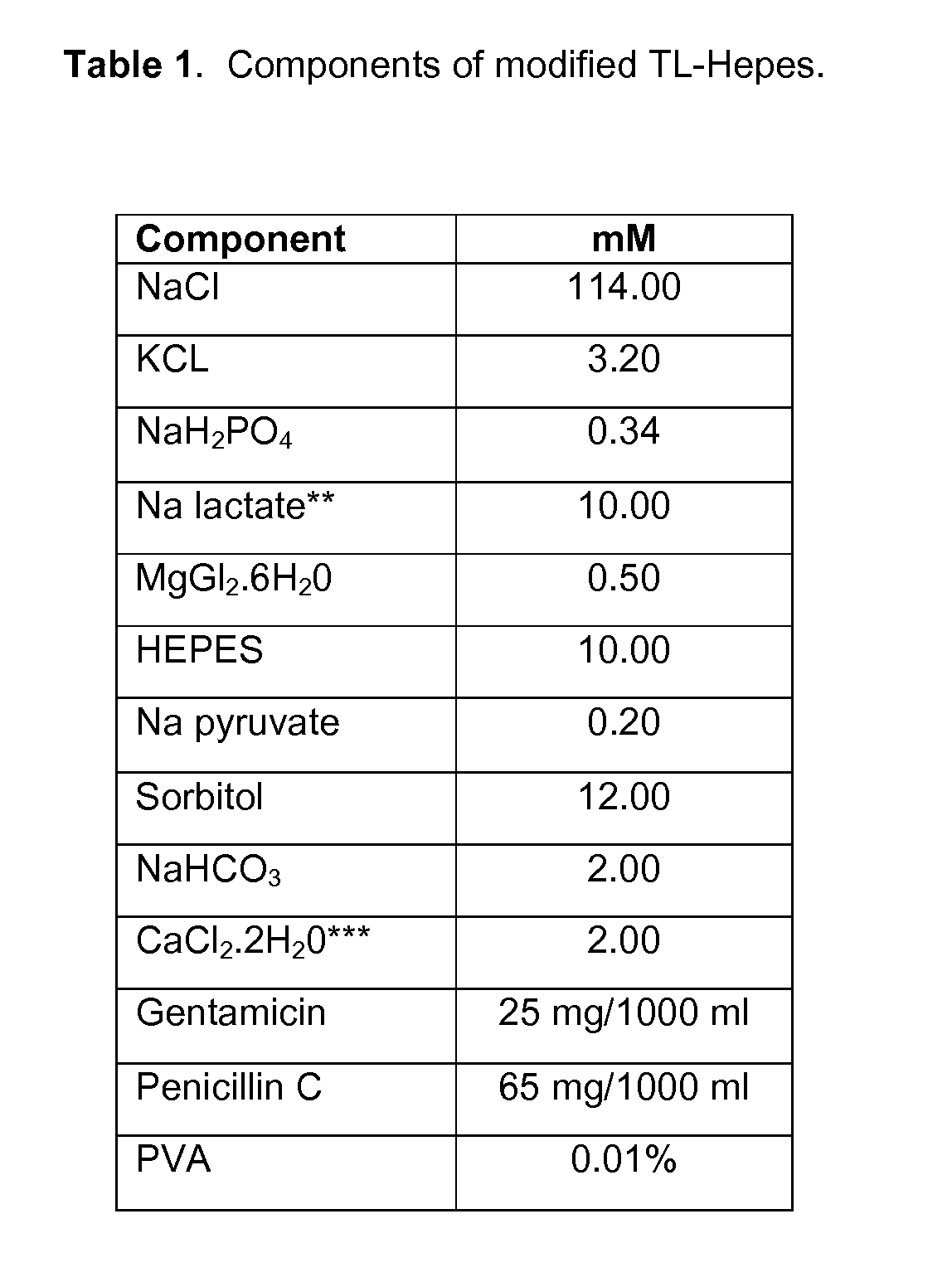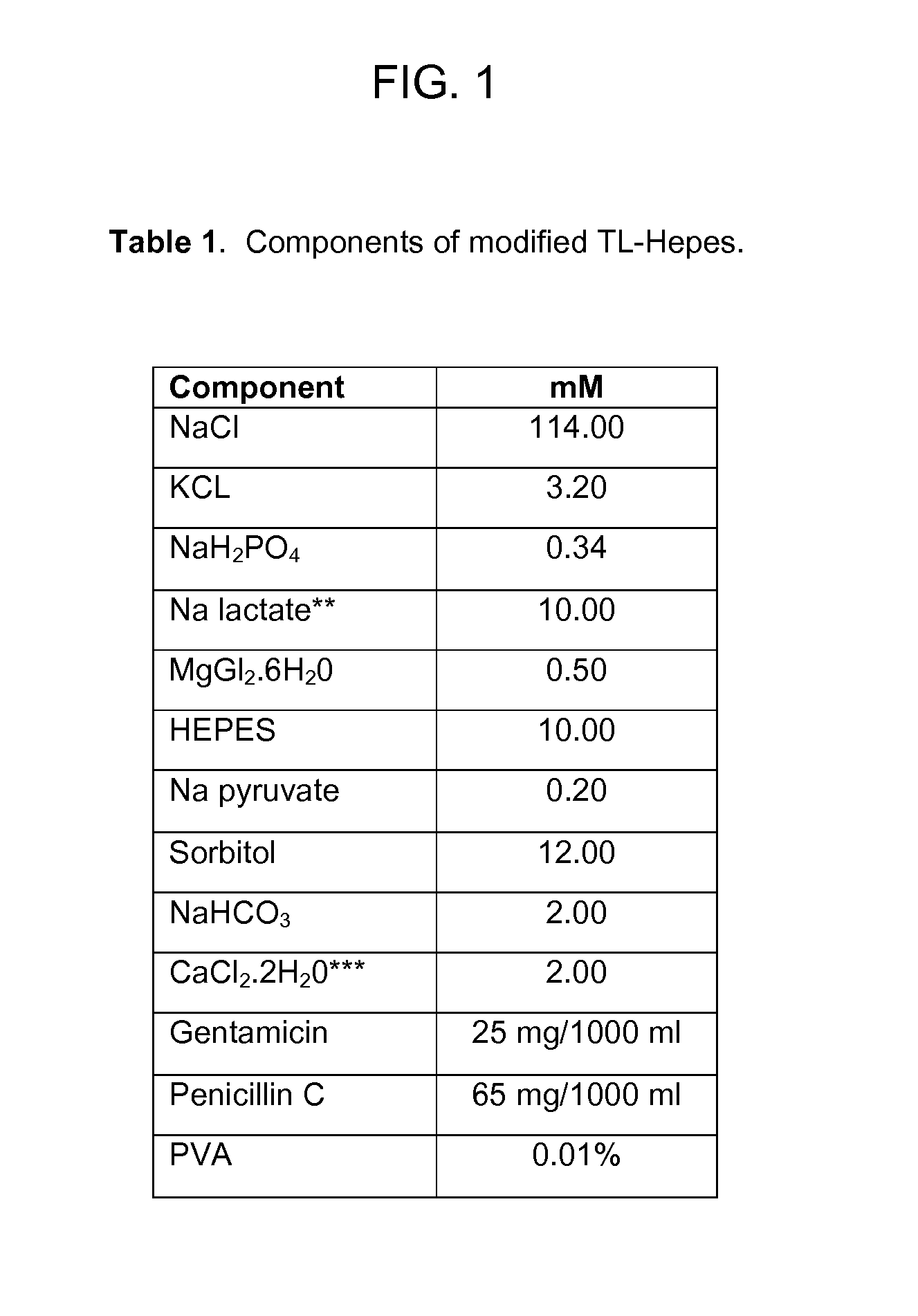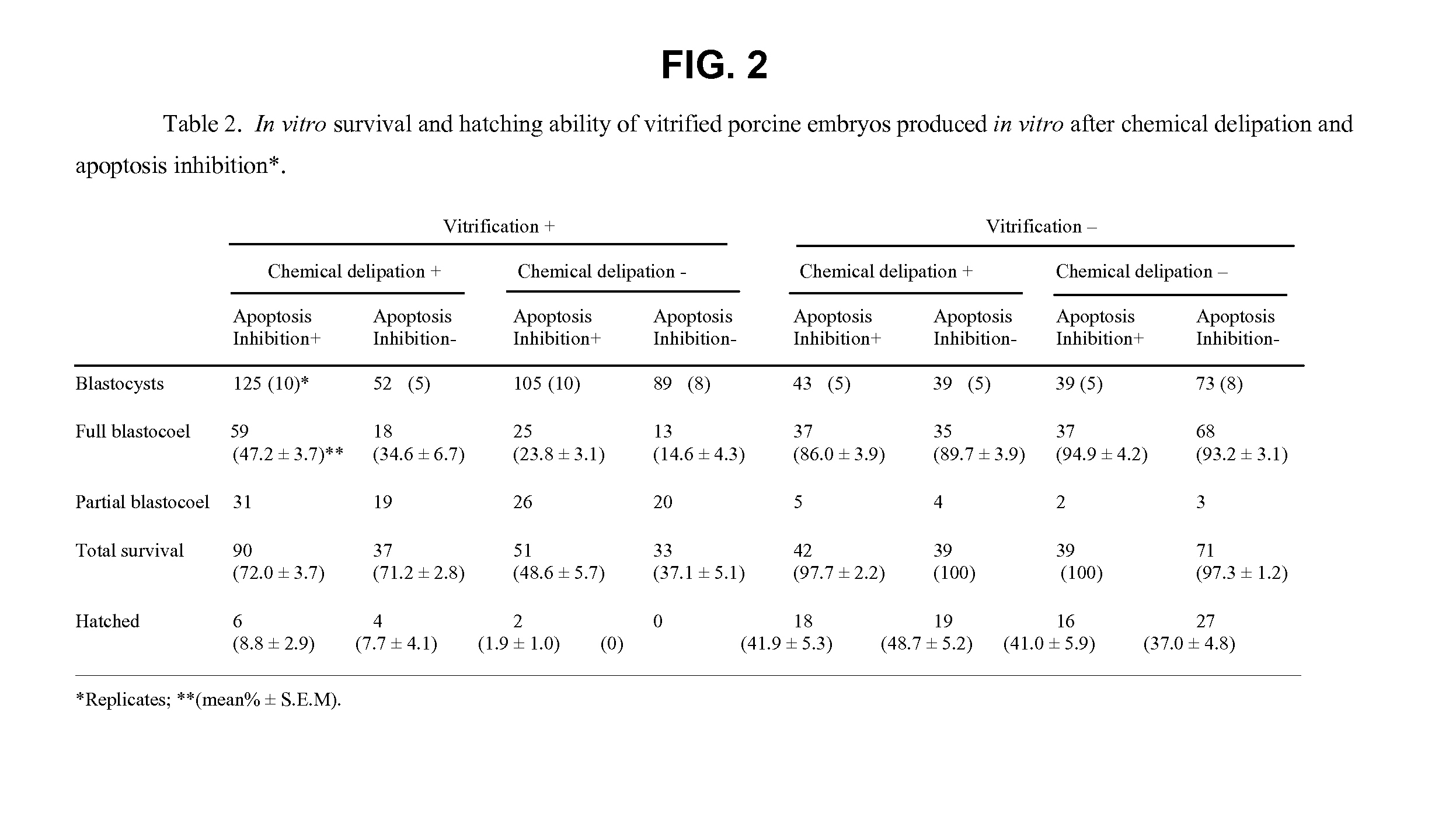Methods for the Cryopreservation of Animal Cells that Contain High Levels of Intracellular Lipids
a technology of intracellular lipids and cryopreservation, which is applied in the field of cryopreservation of animal cells that contain high levels of intracellular lipids, can solve the problems of low poor practical value of approaches, and low efficiency of approaches, so as to increase the survival rate of embryos, reduce lipid content, and increase the survival rate of cells
- Summary
- Abstract
- Description
- Claims
- Application Information
AI Technical Summary
Problems solved by technology
Method used
Image
Examples
example 1
Cryopreservation of In Vitro Produced Porcine Embryos
A. Production and Delipation of In Vitro Produced (IVP) Porcine Blastocysts
[0025]Immature sow oocytes were purchased from BOMED Inc (Madison, Wis., USA) delivered in a commercial shipper overnight in a maturation medium (TCM199-based maturation medium). After 42-44 hours of maturation, matured oocytes were fertilized and cultured in a known manner. On Day 4 (fertilization=Day 0) of embryo culture, the culture medium was supplemented with 10% FBS. On Day 5, a portion of the embryos was treated with 10 μM forskolin. Embryos without forskolin treatment served as controls. After 24 hours of forskolin treatment, blastocysts and expanded blastocysts of excellent quality were used for the vitrification.
B. Vitrification of IVP Porcine Blastocysts
[0026]Blastocysts were vitrified using a known OPS method. A vitrification solution (VS) and a known pre-vitrification treatment procedure were used. Briefly, blastocysts were equilibrated with 1....
example 2
Cryopreservation of Porcine Embryos After Chemical Delipation for Extended Hours
[0027]Porcine embryos were produced in vitro as Example 1, except that 10 μM forskolin was supplemented into culture medium on Day 2 (fertilization=Day 0) of embryonic development. Day 6 porcine blastocysts were vitrified and warmed as described in Example 1 without the supplementation of apoptosis inhibitor. The results are shown in Table 3 of FIG. 3.
example 3
Cryopreservation of Porcine Oocytes
[0028]Similar to porcine embryos, porcine oocytes also contain a very high level of intracellular lipids. The high sensitivity to low temperature of porcine oocytes is also due to their high intracellular lipid content. In accordance with one embodiment of the invention, a delipation approach involving the use of lipolytic agents to stimulate the lipolysis in porcine oocytes will be used to increase the cryosurvival of porcine oocytes. Immature porcine oocytes will be collected from abattoir ovaries and matured. For reduction of intracellular lipids, lipolytic agent will be supplemented into maturation medium to facilitate the enzymatic hydrolysis of intracellular lipids. After maturation and delipation, oocytes will be vitrified. Developmental potential of vitrified oocytes will be assessed by their developmental ability both in vitro and in vivo after in vitro fertilization and culture.
PUM
| Property | Measurement | Unit |
|---|---|---|
| volume | aaaaa | aaaaa |
| v/v | aaaaa | aaaaa |
| concentrations | aaaaa | aaaaa |
Abstract
Description
Claims
Application Information
 Login to View More
Login to View More - R&D
- Intellectual Property
- Life Sciences
- Materials
- Tech Scout
- Unparalleled Data Quality
- Higher Quality Content
- 60% Fewer Hallucinations
Browse by: Latest US Patents, China's latest patents, Technical Efficacy Thesaurus, Application Domain, Technology Topic, Popular Technical Reports.
© 2025 PatSnap. All rights reserved.Legal|Privacy policy|Modern Slavery Act Transparency Statement|Sitemap|About US| Contact US: help@patsnap.com



